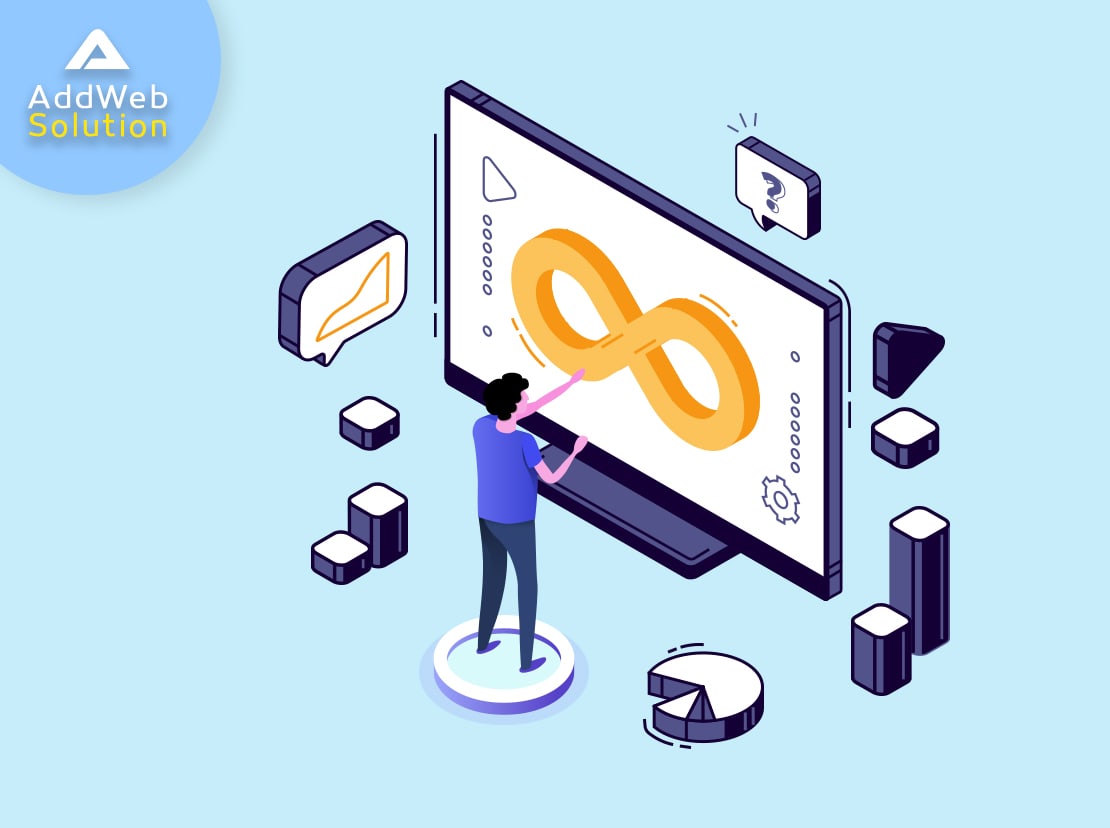“Collaboration”, “Automation”, “Continuous integration”, “Continuous testing”, and “Continuous deployment” and so on – we often think and talk about such things while working with DevOps solutions. But one of the most important things is often left out of discussion and implementation is monitoring. Monitoring has long been the secret ingredient of a successful DevOps implementation. The majority of the organizations often overlook though it could be a shield to prevent critical issues and outages.
Do you know?
- Half of the Fortune 500 companies suffer from downtime of 1.6 hours per week. This means nearly 83 hours during a year their applications or systems are not working properly.
- 98% of organizations confirmed that downtime of an hour costs them more than $100,000.
- 63% of the financial businesses use a third-party monitoring tool to detect the issues and recover it immediately.
- Due to human error or staff negligence, manufacturing businesses face downtime of approximately 23%.
These numbers emphasize the significance of monitoring the application and resources in DevOps solutions and services. Organizations must understand the value of discovering performance deviations, availability issues, and rectifying functional problems at an earlier stage before it gets worse.
Related Reading – Bring in Digital Transformation by Scaling DevOps and Agile Services!
Enters Continuous Monitoring…
- Improves end-user experience
One of the most important activities in DevOps is to keep your application and resources performing well while fulfilling your end user’s expectations. continuous feedback helps DevOps companies to reduce the time required to identify the problem while improving the communication between the development team and operations team. This would result in improved customer experiences while using production data.
- Manage and maintain applications
On the other hand, applications are critical for the business, and thus, they must be always up, perform well, and improve over time. Continuous monitoring of the DevOps solutions and services will help organizations to make sure the development and operations team are working together.
- Identify and resolve issues quickly
Using a monitoring service could be a great way to identify the possible issues with the server details. This would greatly help the DevOps consultant to share the problem with the respective team and fix it without any further delay. Moreover, it would not require any resources to be utilized to carry out manual testing to figure out which application or server was down. This way time spent on the issue is reduced up to great extent.
- Meaningful insights
Implementing the right kind of monitoring strategy can help organizations gain relevant insights and a clear picture of all the applications’ health. For example, many organizations, with the help of DevOps service providers, often opt for monitor earlier strategy. It brings a whole host of benefits to the organizations. The DevOps consultant can define monitors to work along with test cases or to validate specific user journeys.
- Faster delivery
Monitoring helps organizations to ensure that any new updates or changes are not hampering the performance or health of existing applications, databases, or resources. Moreover, continuous monitoring is essential for the agile teams and DevOps consulting service providers since without it they will have to backtrack to know the root cause, blind spots, or false alarms. This in the end consumes time and additional resources to fix the issue.
Businesses can drive more traffic! Yes, that is true! Most of the time, pre-production environments have limited traffic, which can be improved greatly by continuous monitoring.
Also Read – 8 DevOps Trends Predicted for 2020
Concluding…
With the rapidly changing business landscape and technological advancement, your organization needs to be proactive and ever ready to mitigate the problems on production, application availability, and other important aspects. Monitoring provides the organization with quick feedback about their application’s performance and usage patterns. With continuous deployments in DevOps, it is inevitable for organizations to gain a comprehensive and real-time view of the applications and resources.
What’s your application monitoring strategy? Want to get professional DevOps service providers to work with you to avoid unnecessary downtime? Get in touch with us now!
Frequently Asked Questions
Continuous monitoring in DevOps involves the real-time observation of applications, systems, and processes to ensure their health, performance, and security. It is a proactive approach that enables quick detection and resolution of issues.
Continuous monitoring is integral to the DevOps lifecycle as it provides constant feedback on the performance and security of applications. This allows teams to identify issues early, make informed decisions, and enhance the overall efficiency of the development and deployment processes.
Continuous monitoring offers benefits such as early detection of issues, improved system reliability, enhanced security, quicker incident response times, and the ability to make data-driven decisions for optimizing the development pipeline.
Continuous monitoring allows teams to proactively identify and address potential challenges and risks before they escalate. By monitoring key metrics and performance indicators, teams can mitigate issues, prevent downtime, and improve overall system resilience. incident response times, and the ability to make data-driven decisions for optimizing the development pipeline.
Yes, continuous monitoring facilitates faster issue resolution by providing real-time insights into system behavior. This enables teams to identify the root cause of issues promptly, leading to quicker remediation and minimizing the impact on development and operations.
Organizations should monitor a variety of metrics, including system performance, application response times, error rates, resource utilization, security events, and user experience. Continuous monitoring should cover all aspects relevant to the organization’s goals and objectives.
Continuous monitoring fosters collaboration by providing shared visibility into the performance and health of applications. Both development and operations teams can access the same set of data, enabling better communication, faster issue resolution, and more effective collaboration.
Continuous monitoring should ideally cover all stages of the development lifecycle, from testing and staging to production. Monitoring throughout the entire lifecycle ensures that issues are identified early and that the application performs consistently across different environments.
